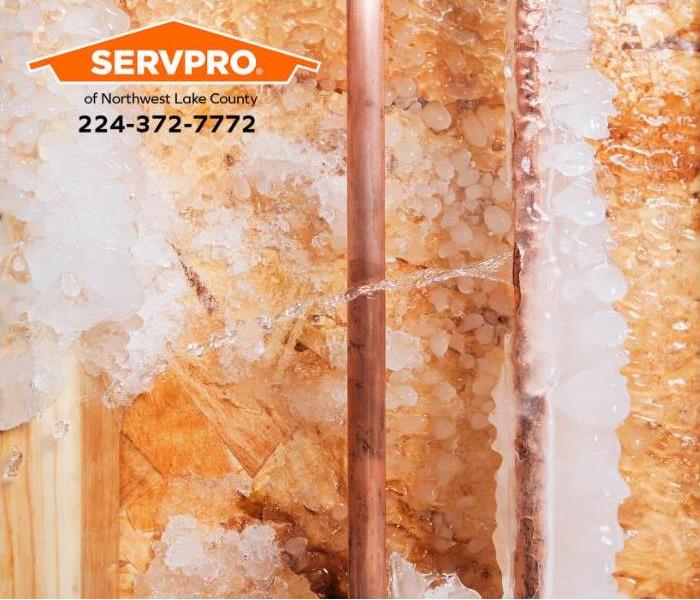Can I Use a Hairdryer to Thaw a Frozen Pipe in My Home in Antioch?
11/27/2023 (Permalink)
Our local Northwest Lake County team has been responding to water damage emergencies in Antioch for years. One common form of water damage during the winter months comes from frozen and burst pipes. Thawing out a frozen pipe using a hairdryer is a safe and effective method if done correctly. Here's a step-by-step guide on how to use a hairdryer to thaw a frozen pipe:
Tools You Will Need
Hairdryer
Extension cord (if needed)
Towels or rags to catch water and insulate the area
A bucket or container to catch dripping water
A thermometer (optional) to monitor progress
Take Safety Precautions
Ensure your safety by wearing insulated gloves and eye protection.
Check the hairdryer for any frayed cords or damage before use.
Locate the Frozen Section
Identify the frozen section of the pipe. Usually, you'll find it in an area that is exposed to cold air, such as a basement, crawlspace, or an exterior wall.
Prepare the Area
Lay towels or rags around the frozen pipe to catch dripping water.
Place a bucket or container under the affected area to collect any water that may leak when the pipe thaws.
Plug in the Hairdryer and Set to a Low Heat Setting
Plug the hairdryer into a nearby electrical outlet. If the outlet is not within reach, use a suitable extension cord. Start with the hairdryer on a low or medium heat setting. High heat may cause rapid expansion and could damage the pipe.
Begin Thawing
Hold the hairdryer close to the frozen pipe, but not too close. Maintain a distance of at least 6 inches (15 centimeters) between the hairdryer and the pipe. Move the hairdryer back and forth along the frozen section of the pipe. Focus on the area closest to the faucet and work your way toward the blockage. Continue to direct warm air onto the frozen pipe, keeping it in constant motion. The heat from the hairdryer will gradually melt the ice inside the pipe.
Monitor Progress
As you work, periodically check the affected pipe's temperature with a thermometer, if available. You want to make sure it's gradually warming up. Be patient; thawing a pipe can take some time, depending on the extent of the freeze and the pipe's thickness.
Test the Faucet
Once you notice water flowing freely from the faucet, the pipe is likely thawed. Turn on the nearest faucet connected to the frozen pipe to confirm that the water is flowing smoothly. Leave the faucet on for a few minutes to flush out any remaining ice.
Remember to exercise caution when using electrical appliances around water, and if you have any doubts or concerns about dealing with frozen pipes, it's advisable to consult a service professional for assistance.
Call Us Today!
When your home or commercial business in Antioch has water damage from frozen pipes and you need emergency water damage restoration services, our team in Northwest Lake County is Here to Help. ® Call us today at 224-372-7772.
SERVPRO® Franchises are Independently Owned and Operated.






 24/7 Emergency Service
24/7 Emergency Service
